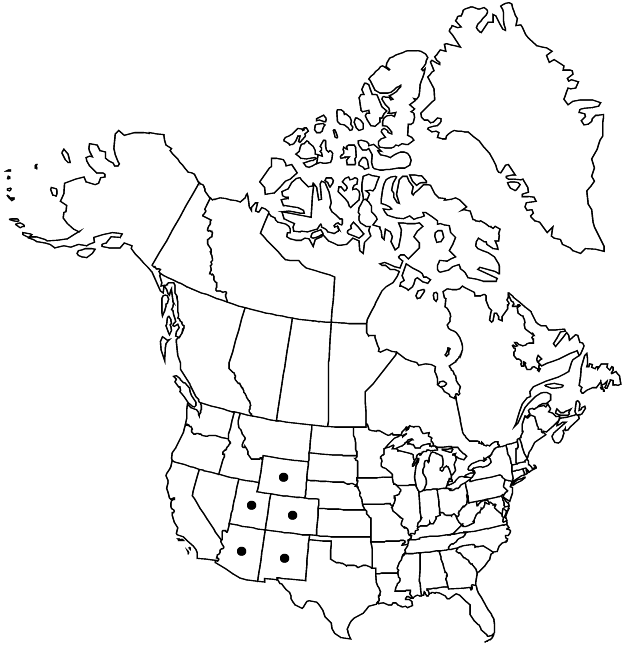familyCaryophyllaceae
subfamilyCaryophyllaceae subfam. Alsinoideae
genusEremogone
speciesEremogone eastwoodiae
Difference between revisions of "Eremogone eastwoodiae var. eastwoodiae"
Treatment appears in FNA Volume 5. Treatment on page 64.
imported>Volume Importer |
imported>Volume Importer |
||
| Line 41: | Line 41: | ||
|publication year= | |publication year= | ||
|special status= | |special status= | ||
| − | |source xml=https:// | + | |source xml=https://bitbucket.org/aafc-mbb/fna-data-curation/src/2e0870ddd59836b60bcf96646a41e87ea5a5943a/coarse_grained_fna_xml/V5/V5_131.xml |
|subfamily=Caryophyllaceae subfam. Alsinoideae | |subfamily=Caryophyllaceae subfam. Alsinoideae | ||
|genus=Eremogone | |genus=Eremogone | ||
Latest revision as of 22:09, 5 November 2020
Stems glabrous. Pedicels glabrous. 2n = 22.
Phenology: Flowering late spring–late summer.
Habitat: Dry, stony or sandy hills, mesas, and deserts
Elevation: 1300-2200 m
Distribution

Ariz., Colo., N.Mex., Utah, Wyo.
Discussion
Selected References
None.
Lower Taxa
None.